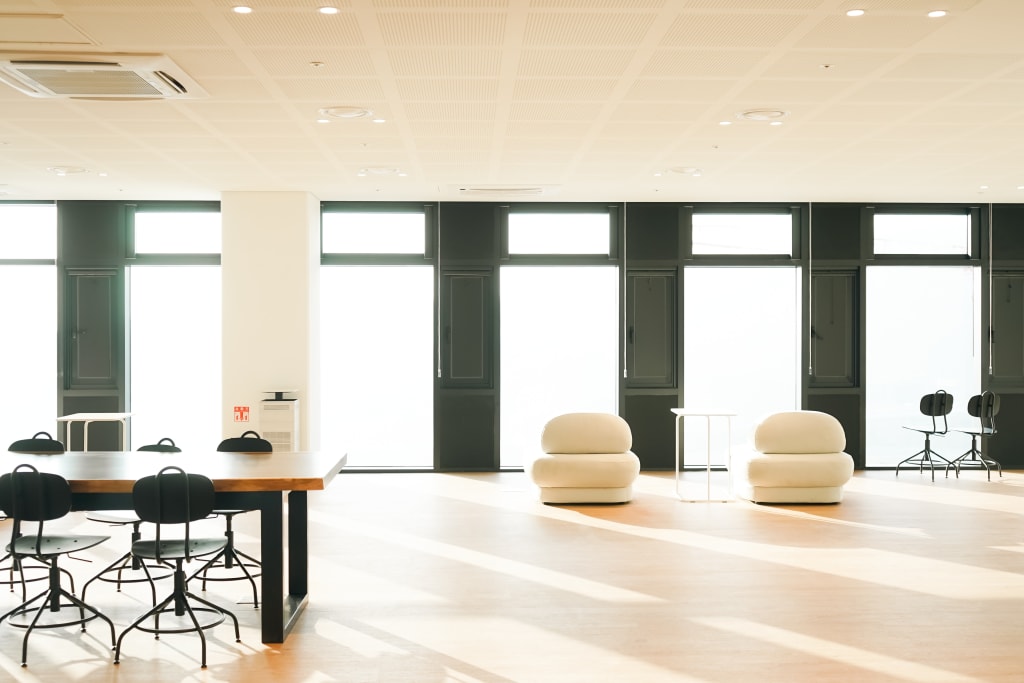Reasons Why Conventional Meeting Spaces Are Expensive in the Long Run
This article will examine the unseen expenses of conventional conference rooms and explain why a shift is warranted.

Introduction
Today's business world moves at lightning speed, making communication and teamwork more important than ever. In order to facilitate teamwork and decision-making, conference rooms are an indispensable component of any business. Traditional conference rooms, on the other hand, have hidden expenses that can reduce efficiency and waste time and money. This article will examine the unseen expenses of conventional conference rooms and explain why a shift is warranted.
Use of Space That Isn't Maximised
Inefficient space use is one of the unseen costs of conventional conference rooms. Most workplaces have designated meeting rooms, but they're only used for a small fraction of the day. There is a loss of potential profit when these rooms lie unused since other uses for the area were not pursued. Shared office space and teleconferencing technology allow organisations to make better use of their physical premises while cutting costs.
Inexpensive Software and Hardware Costs
Investing heavily in technological infrastructure is usually necessary for traditional meeting rooms. It can be costly to equip a room with video conferencing technology, audio systems, and display panels, and the ongoing costs of maintenance and upgrades just add insult to injury. Meeting productivity can also be negatively impacted by the time spent on setting up and troubleshooting technology. The adoption of cloud-based collaboration tools and virtual meeting platforms not only offers streamlined communication but also reduces the need for expensive hardware installations.
Costs Associated with Travel and Lodging
When employees need to go to a physical location for a conference, companies often spend a lot of money on lodging and transportation. Having employees or clients go to a physical place for a meeting is expensive in terms of gas, time, and money spent on lodging and food. Businesses can save time and money by using virtual meeting solutions, which enable participants to join meetings from anywhere.
Lost Time Due to
Traditional meetings have a bad reputation for eating up too much time. It's possible that people will have to travel to a specific area, wait around for things, and sit through hours of conversation. Moreover, wasted time and decreased productivity frequently come from schedule conflicts and last-minute modifications. The time and effort spent travelling to and waiting around for physical meetings are both eliminated with the option of holding meetings virtually.
Effects on the Environment
The negative impact that conventional meeting spaces have on the environment is frequently disregarded. The transit to and from meeting locations, as well as the meeting venues themselves, all add up to a significant amount of greenhouse gas emissions. Virtual meetings allow businesses to minimise the environmental impact of their operations by cutting down on unnecessary travel and making better use of available resources. This is in line with the growing sustainability concerns of stakeholders and customers, and it also helps the environment.
Inability to Reach People
People with disabilities or those who live in more rural places may have difficulty accessing traditional meeting rooms. Meeting in person might be challenging for persons who have mobility challenges or who live in different locations. With virtual meetings, everyone may take part no matter where they are or what their mobility restrictions are. This fosters an inclusive work environment and provides a platform for new viewpoints.
Decreasing Flexibility and Capacity to Grow
Organisational flexibility and growth might be stunted by the use of permanent meeting spaces. The importance of flexible meeting places rises as organisations develop and staff sizes change. Traditional meeting spaces can become bottlenecks that slow progress and stifle teamwork. A more adaptive and responsive workplace can be fostered through the use of flexible meeting options like coworking spaces and online meeting platforms.
Conclusion
While conventional meeting spaces have been the norm for a long time, there are expenditures that sometimes go unnoticed by enterprises. Organisations may save money, be more productive, and reduce their environmental impact if they rethink the way they hold meetings. Businesses may revolutionise their approach to meetings by embracing virtual meeting options, shared workspaces, and cutting-edge technologies. It's time to embrace a new era of communication and collaboration that doesn't rely on stuffy boardrooms.
About the Creator
Munnazir Zarin
"I'm a blogger covering a variety of topics. If you enjoy my content, please consider supporting me and suggesting new topics for me to explore. Thank you!"






Comments
There are no comments for this story
Be the first to respond and start the conversation.